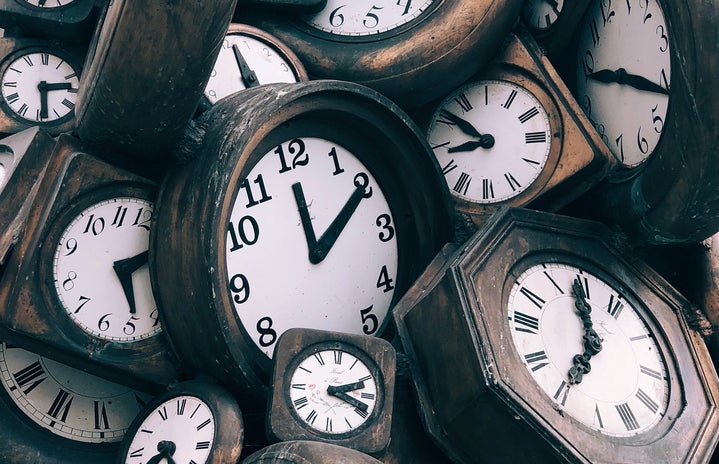Edited by: Abhirami Nair
The past and the future, two perplexing elements of time, have for quite some time been isolated by an unfavourable gap. The past is a vault of history, a domain of illustrations learned and shrewdness procured. The future, then again, is a domain of boundless conceivable outcomes, where development and potential are anticipated. Imagine a scenario where these two worldly aspects could take part in a discussion, rising above the limits of time. In this article, we leave on a speculative excursion to investigate the significant trade between the past and the future and the bits of knowledge that could rise out of this immortal discourse.
Envision a spot past the limitations of time, a supernatural space where the past and the future can meet and banter. In this enormous venue of presence, the past is exemplified as an encapsulation of verifiable information and experience. What’s in store accepts structure as an element of endless interest and potential. They face one another, isolated by the ages of time yet associated by the immaterial string of human life.
The discussion starts with the past, a revered substance that carries inside itself the heaviness of mankind’s experiences. It discusses the ages gone by, the ascent and fall of realms, and the growth and invention witnessed by homosapiens.
“I’m the overseer of history,” the past announces. “I hold inside me the examples of centuries. From the advent of the Industrial Revolution to the levels of the Renaissance, I have seen humankind’s victories and afflictions. I bear the scars of wars and torment, the reverberations of extraordinary revelations and creations, and the insight that went down through the ages.”
The future, still an unfilled material, overflowing with potential and interest, answers with a feeling of trust and expectation. “While your encounters are significant,” it proclaims, “I hold the commitment of another party. I’m the encapsulation of dreams and desires, a demonstration of the voracious human soul. I anticipate the unfamiliar domains, the logical leap forwards, and the advancements that will reshape the world.”
As the discourse unfurls, the past elucidates the meaning of gaining from history . It accentuates that the preliminaries and blunders of past times are not to be neglected yet rather integrated into the texture representing things to come.
“The historical backdrop of mankind is an embroidery woven with the strings of mix-ups and triumphs,” the past articulates. “It is a demonstration of the versatility of our species, the endless force of development, and the limit with respect to development. The scars of the past are not intended to be covered yet to act as signals, directing mankind away from the traps of haughtiness, narrow mindedness, and foolishness.”
The future, anxious to embrace the insight of the past, recognizes the worth of verifiable illustrations. “We are entrusted with a gigantic obligation,” it says. “We should push the limits of information as well as apply the moral illustrations from your age. Progress ought not be to the detriment of morals and empathy.”
Through their discussion, it becomes obvious that the past and the future are not detached elements yet rather fundamental parts of a never-ending cycle. The past grants information, while what’s to come looks to apply it, consequently guaranteeing the congruity of human advancement.
The past is the manager of the lamp, enlightening the way forward, as what’s to come leads, moving consistently toward an obscure objective. Together, they structure a continuum, where the encounters of the past shape the direction representing things to come, and the capability representing things to come gives significance to the past.
The discussion between the past and what’s in store offers a piercing sign of the interconnectedness of time. We are not just latent spectators but rather dynamic members in a great story that traverses hundreds of years and ages.
The examples of history furnish us with a guide, directing us through the maze of time. They show us the significance of sympathy, the outcomes of ravenousness, and the fleetingness of force. The past advises us that our activities have expansive ramifications, and it provokes us to pursue better decisions.
The future, thus, typifies the human soul’s persevering quest for progress and development. It is a demonstration of our versatility, inventiveness, and vast potential. What’s in store urges us to imagine a world that embraces the qualities and shrewdness of the past while pushing the limits of information and human potential.
The insightful discussion between the past and what’s to come is an interesting activity that urges us to consider the interaction of time. It highlights that we are not latent passive onlookers but rather dynamic supporters of the advancing story of mankind.
To make an agreeable concurrence between the past and the future, we should recognize the abundance of intelligence held by our ancestors. We should refer to their encounters to explore the mind-boggling difficulties of the present and guarantee a more splendid, promising future.
Eventually, this exchange of words between the past and what’s to come is a firm reminder that we stand at the junction of time, with the chance to connect the worldly gap that isolates us from our predecessors and our relatives. By embracing the examples of the past and applying them to the present, we can all shape a future that praises the past while moving the ages on the way.


